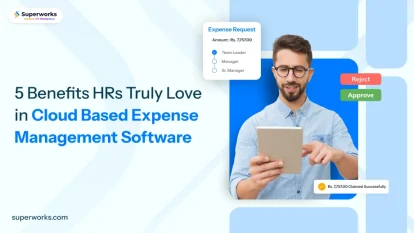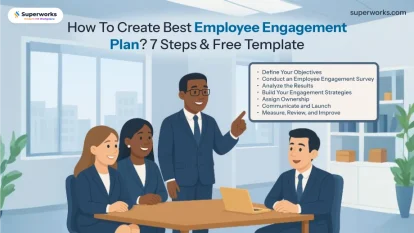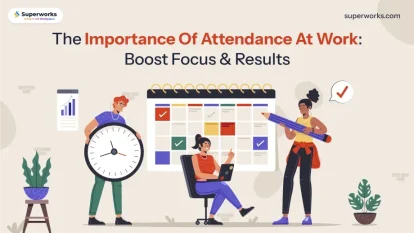
Managing leave is key to any business. A good leave management program ensures business continuity while respecting employee’s right to time out. It lessens payroll mistakes, guarantees consistency with labor laws, and boosts representative fulfillment. In this article, we will break down the basic parts of a leave the executive’s program and the devices and best practices that make it work. Whether you’re searching for leave management software, leave the board application, or arranging a leave the management project, we take care of you.
What’s a Leave Management Program?
A leave management program is a process to manage employee leave requests, track time-off balances, and secure compliance with policies and laws. It can handle various types of leave such as leave, sick leave, parental leave, and emergency leave while keeping the business running freely. A good leave management program also involves:
- Accurate leave tracking: Employees need to know how much leave they’ve and employers need real-time tracking to avoid payroll errors.
- Leave scheduling: directors need to authorize leave requests in a way that meets business conditions without overcharging other team members.
- Compliance with laws: Labour laws vary by location and industry. A good program ensures all leave complies with federal, state, and local laws.
- Employee satisfaction: Clear leave policies that are easy to understand and accessible can greatly boost employee morale and satisfaction.
For businesses looking for digital solutions, leave management apps or leave management software can automate these processes and reduce the administrative load on employees and employers.
Challenges in Managing Employee Leave
Managing employee leave may feel easy but it comes with a set of challenges that can impact business operations if not managed right. now are the critical challenges most companies face:
1. Compliance with Labour Laws
Labor laws vary by country, state, and even industry. These include rules on paid leave, outstanding leave, and specific types like family or medical leave. Failure to comply with these regulations can result in hefty forfeitures or suits. A good leave operation system ensures you stay biddable with original laws by applying the right rules to every employee’s situation.
2. Accurate Leave Tracking
Accurate tracking of leave requests, approvals, and balances is important for payroll and avoiding disputes with employees. When this is manual it’s easy to lose track of who’s on leave and when which can lead to scheduling conflicts or errors in leave balances. An employee leave management system can automate this process, reducing errors and ensuring employees are paid for their time off.
3. Business Continuity
Multiple employees on leave at the same time can leave certain departments understaffed and impact productivity. Businesses need to approve leave requests while ensuring adequate workforce coverage. A leave planner helps with this by allowing managers to see and organize leave schedules, reducing the risk of understaffing.
4. Payroll and Leave Balance Errors
Manual errors in leave calculation can lead to payroll problems. Whether employees take neglected leave, sick leave, or some other sort of time off, those hours should be tracked for payroll purposes. Inaccurate data can perform in compensation or compensation of employees which can erode employee trust. A leave management app integrated with your payroll system minimizes these risks by automating leave balances and salary adjustments.
Build a leave management program that reduces errors by 70%!
Super HRMS allows you to manage your leave details and accuracy in a single click!
How to Build a Leave Management Program
making a leave management program isn’t just about compliance. It’s also about creating a system that’s user-friendly, flexible, and aligned with company goals. Here are the best practices to follow:
1. Clear and Transparent Leave Policies
A well-defined leave policy is the foundation of any good leave management program. Your leave policies should outline the types of leave offered, how to request leave, and how leave accrual works. For example, how many days’ notice is required to apply for leave? What happens to unused time off? Is there a rollover policy for PTO (Paid Time Off)? By making these policies clear you set the right expectations for your employees.
A leave application format for employee can help streamline the process and ensure all the necessary information is captured when leave is requested.
2. Automate Leave Tracking with Software
Manual leave tracking is error-prone. That’s why using a leave management system online can reduce administrative load. Many companies use solutions like BambooHR or Homebase that integrate with HRMS platforms to automate leave tracking, payroll, and scheduling. Automating these processes ensures consistency especially when dealing with complex scenarios like unpaid leave or extended sick leave.
3. Compliance with Labor Laws
Whether you’re in India or away, labor laws can be complex and differ by authority. Guarantee your surrender strategies are to date and consistent with federal, state, or industry-explicit regulations. In India, HRMS software helps businesses comply with leave laws and ensure employees get their commanded time off whether paid or overdue.
4. Self-Service Options for Employees
Giving employees access to a self-service platform where they can check their leave balances, request leave and track approvals reduces the load on management. A self-service leave management app or leave planner allows employees to manage their leave without HR Leave Management intervention, efficient for both sides.
5. Update Policies and Procedures
Leave management policies should evolve with your business. Regular reviews ensure your policies are up-to-date and conformable to new laws. Keep the communication lines open by informing employees of any changes especially when it comes to time-off requests and accruals. Having a leave report accessible to employees can give them clarity on how their leave is calculated.
Tools and Software for Leave Management
With the fast pace of technology, businesses can now use various leave management program and leave management apps to make it easier. Here are some of the top tools:
- Bamboo HR: All-in an HRMS platform with a focus on employee self-service, time-off tracking, and performance management.
- Homebase: For small to medium-sized businesses, Homebase has a simple-to-use leave management system online that coordinates with scheduling and payroll.
- Sling: Sling joins scheduling with the leave management program, making it more business for organizations to manage workforce inclusion during leave periods.
- Buddy Punch: Known for time-following, Mate Punch additionally has leave management tools for the executives to track PTO, sick leave, and other absences.
Each of these tools integrates with payroll systems, so businesses can manage employee leave management program without the administrative load of manual tracking.
Legal Compliance and Leave Regulations
Compliance with labor laws is essential for every business. Depending on location and industry, businesses need to follow different regulations for paid and unpaid leave. For example in India, HRMS software India helps businesses navigate the complex regulatory landscape of employee leave and comply with laws like Factories Act and Shops and Establishments Act.
Companies that operate globally need to consider the legal differences in each region. A leave management system project should always involve consultation with legal professionals or HR experts to ensure policies are legally sound and fair to employees.
Employee Engagement and Retention Through Leave Management
Clear and communicated leave policies can be a retention tool. When employees know their leave application entitlements and trust the system, they will take time off when needed and reduce burnout. This is especially true for programs like maternal leave, extended sick leave, or personal time off for emergencies. By offering flexible and generous leave policies, businesses can create a positive work culture where employees feel valued.
Using leave is as important as managing it. A company that promotes work-life balance can improve morale and productivity in the long run.
Conclusion
A good leave management program is key to productivity and employee happiness. Whether you use a leave management system online or develop a leave management Program system project, clear policies, automation tools and compliance with laws are the keys to success. With the right tools and processes in place, businesses can manage employee absences without disrupting operations.





